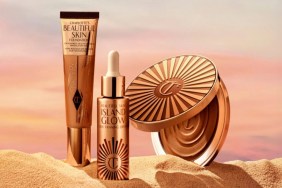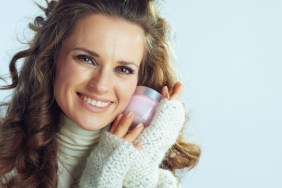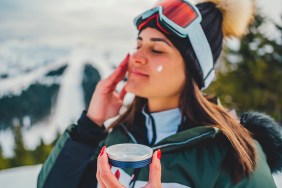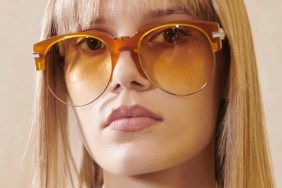Know What “Broad Spectrum” Means
There are two basic types of sun rays: UVA and UVB. Once upon a time, sunscreen contained only UVB protection (and some still does). But every person needs to be protected from both types of harmful rays. So when you’re looking at sunscreens make sure the label says “broad spectrum” protection, meaning it has ingredients to combat both UVA and UVB. Another option is to use sunblock instead of sunscreen, there is a difference between the two.
Broad Spectrum SPF 50 Sunscreen Body Cream, $23
About Sunscreen
According to the melanoma foundation, there are two types of liquid sun protection, chemical and physical. Each works in a different way to protect your skin. Chemical lotions are known as sunscreens and traditionally use ingredients to absorb and disperse UVB rays, preventing them from penetrating skin. More recently, they also include ingredients to block UVA rays. (Read the label to know for sure!) Sunscreen can and should be used on a daily basis for regular activity like your work commute. Sunscreen is lightweight and transparent when it’s applied.
Rocky Mountain Sunscreen Bonding Base Enhanced Broad Spectrum SPF, $35.10
About Sunblock
Physical lotions are known as sunblocks. These contain minerals like zinc oxide and titanium dioxide that physically create a barrier against both the sun’s UVA and UVB rays. Sunblock is usually white, thicker and remains visible after you put it on. Sunblock is best used for anyone planning to spend hours in the sun at a time, say playing in a beach volleyball tourney. Most of us don’t like the idea of being covered head to toe in what looks like white paint, and choose sunscreen, regardless. It’s not pretty, but those are the facts.
PRESCRIBEDsolutions Up the Anti (Physical Sunblock with SPF 30, $55

Know Your SPF
Here’s the story with SPF: it’s a number that theorizes how long you can stay in the sun when the product in question is applied, versus going out with bare skin. But it’s tricky, and imperfect. Because age, sun strength, time of day and your genes all play a part in whether or not that number rings true for you. To make matters as simple as possible, just go with at least an SPF 30. According to studies, it blocks about 97% of the harsh rays that cause serious damage. It’s said that SPF 45 blocks about 98%. What about SPF 75? According to the FDA, that’s little more than marketing foolery, as no level of SPF protects 100% and the higher SPF numbers’ increase in protection is negligible. Unfortunately, many people buy the highest SPF possible for themselves or their kids, thinking it means they can stay out all day long and be invincible to sun damage. They end up not re-applying and staying out longer than they would with a lower SPF that offers virtually the same protection.
NO-AD Sunscreen Lotion, SPF 45, $9.99
Sunscreen Ingredients to Embrace, Ingredients to Stay Away From
Remember that you need protection against UVB and UVA rays. The physical nature of sunblock naturally protects against both, but not so with sunscreen. As of right now, SPF only indicates UVB protection. There’s no rating system for UVA. Again, keep your eyes peeled for “broad spectrum,” indicating that a sunscreen protects from both. Ingredients in sunscreen that protect from UVB are glycerol PABA, padimate A and padimate O. UVA protectors are oxybensone, sulisobenzone and Parsol 1789. Note: Some have an allergic reaction to PABA and therefore may look for sunscreens without it, which is also labeled.
There is growing concern over the use of oxybenzone, a common ingredient in many sunscreen and makeup products. The Environmental Working Group and other experts believe that oxybenzone is linked to hormone disruption and cell damage that may lead to skin cancer. Other experts, such as the FDA, dispute this fact, saying it is safe, effective and widely used.
Stay away from retinyl palmitate, it’s a form of Vitamin A that can actually accelerate serious sun damage. Some sunscreens contain it for its anti-aging properties, but its protection against fine lines is outweighed by the damage it can do as a carcinogen. A good option might be a no-fragrance sunscreen for kids, if you have sensitive skin.
California Baby Sunscreen Lotion SPF 30+, No Fragrance, $19.99
Know How Much Sunscreen to Use and How Often to Re-Apply
Even the most perfect SPF (that hasn’t been invented yet) or the best sunblock does not protect against the sun for more than an hour or two. And that includes waterproof and water-resistant varieties. Always re-apply about every hour or so when you’re outdoors. What about your moisturizer that has SPF 15? Unfortunately, that too will wear off after a couple of hours. Still, it’s better than nothing on a day to day basis. Experts say that we should apply the same amount of lotion that would fit in a shot glass to protect our entire bodies, and that most people don’t use enough. So don’t be afraid to slather it on before you head out in your swimsuit.
Banana Boat Sunblock Spray, Quick Dry Sport SPF 30, $7.19
Know That None of It Is an Excuse to Stay in the Sun Forever
Want to know what the doc says is the best way to protect against sun exposure? Limit exposure with sunglasses, large brimmed hats and clothing. Stay indoors from 10 a.m. to 4 p.m. Everyone needs a regular dose of Vitamin D, the main source of which we get from the sun. But overall, you should really rethink your sun worshipping ways if you have a habit of laying out in the sun or under a tanning lamp. Don’t be fooled by the term “healthy glow.” A tan is actually your skin’s reaction to being damaged; it’s literally unhealthy. Embrace your skin’s natural, beautiful tone and know that no matter what it is, variety is the spice of life! Every skin color is beautiful the way it was meant to be.
[ Next: Watch: When It Comes to Sunscreen, This Video Will Scare You Straight ]







